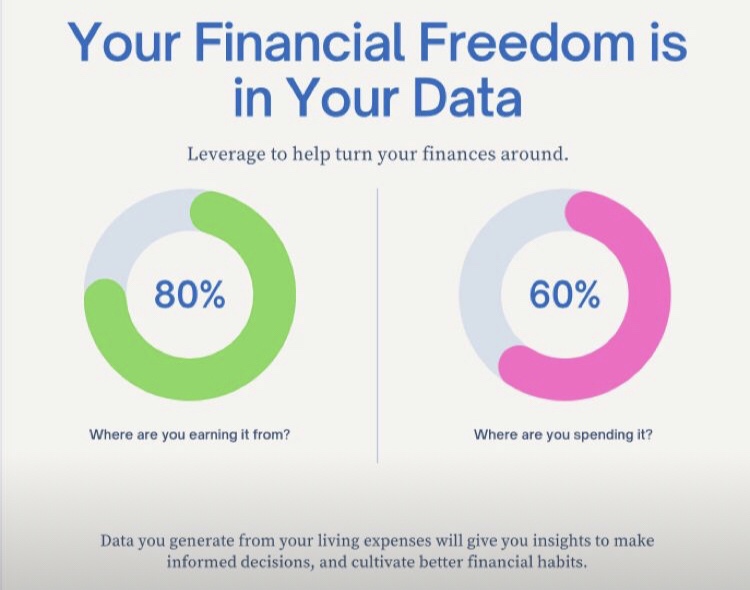Did you know, one of the initial exercises you do with a personal finance coach is to assess the data you have on your income and expenses?
In today’s fast-paced and economically challenged world, managing family finances effectively is crucial for long-term financial well-being. Fortunately, families generate valuable data on their living expenses that can be reviewed and used to improve financial discipline and overall financial health.
In this article, we will explore how families can leverage the data they generate from their living expenses to gain insights, make informed decisions, and cultivate better financial habits, ultimately enhance their financial well-being.
The Power of Living Expense Data
Every purchase, bill payment, and financial transaction generates data that families can use to their advantage. Examples of the data include where you shop, how much you spend, how regularly you shop for those items, when you shop, combination of items in your shopping basket and so much more. By harnessing this living expense data, families gain a deeper understanding of their spending habits, identify areas for cost cutting, cultivate better financial disciplines, make informed decisions, optimize their spending, and work towards their financial goals more effectively.
- Tracking and Analyzing Living Expenses
- Recording Expenses: Encourage your family members to consistently track and record their expenses. Utilize digital tools, mobile apps, or spreadsheets to document purchases, bills, and other financial transactions. This disciplined approach establishes a comprehensive dataset for analysis.
- Categorizing Expenses: Create expense categories tailored to your family’s needs (e.g., housing, utilities, groceries, entertainment). Assign each expense to its respective category to gain visibility into spending patterns. This categorization helps identify areas where adjustments can be made.
- Regular Expense Reviews: Set aside dedicated time each week or month to review and analyze your family’s living expenses. Look for trends, patterns, and potential areas of overspending. This analysis provides valuable insights into spending habits and highlights opportunities for improvement.
- Insights from Living Expense Data
- Identifying Spending Patterns: Examine the living expense data to identify recurring spending patterns and habits. Are there certain categories where spending consistently exceeds the budget? Recognizing these patterns allows families to address areas of overspending and implement corrective measures.
- Evaluating Value for Money: Assess the value derived from various expenses. Are there services or subscriptions that are not delivering sufficient value? Analyze the cost-benefit ratio of each expense and consider eliminating or optimizing those that do not contribute significantly to your family’s well-being.
- Establishing Priorities: Review your family’s financial goals and aspirations. Use living expense data to align spending with these priorities. By understanding where money is being allocated, families can make intentional choices that support their long-term goals.
- Cultivating Financial Discipline
- Budgeting and Goal Setting: Utilize living expense data to create realistic budgets for different expense categories. Set specific goals such as savings targets, debt reduction, or education funds. Regularly track progress towards these goals and adjust spending habits accordingly.
- Spending Awareness and Accountability: Regularly discuss living expense data with your family members to promote transparency and shared financial responsibility. Encourage open conversations about financial decisions, instilling a sense of accountability, planning, delayed gratification, and awareness among family members.
- Behavioral Adjustments: Use the insights gained from living expense data to foster positive spending behaviors. Identify triggers for impulsive purchases and find alternative ways to address those triggers. Encourage mindful spending and emphasize the long-term benefits of disciplined financial habits.
- Leveraging Technology and Tools
- Take advantage of the numerous financial management tools and apps available to simplify the process of tracking and analyzing living expenses. Explore budgeting apps, expense trackers, and financial dashboards that can automate data collection, provide visual representations of spending, and offer personalized recommendations for cost optimization.
Conclusion
By harnessing the power of living expense data, families can cultivate financial discipline, improve spending habits, and enhance their overall financial well-being. Tracking, analyzing, and acting upon living expense data allows families to make informed decisions, align their spending with financial goals, and optimize their financial resources effectively.
Empower your family by leveraging the data you generate on your living expenses and take control of your financial future.


No responses yet